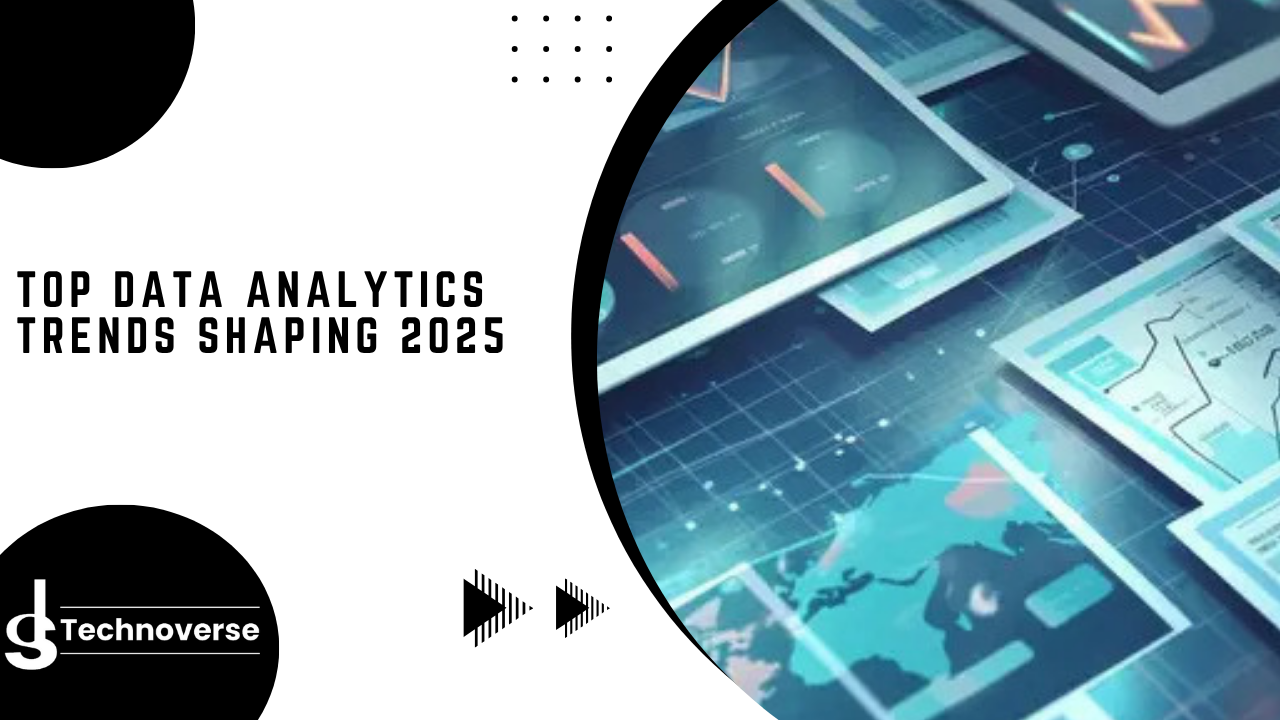
As we move deeper into the digital age, data analytics is evolving at a rapid pace, reshaping how organizations operate, innovate, and compete. In 2025, several transformative trends are defining the future of data analytics, driven by advancements in AI, cloud computing, security, and user accessibility. Here’s a look at the top data analytics trends that are set to shape the business landscape this year.
Artificial Intelligence (AI) and machine learning are now at the core of data analytics solutions. In 2025, AI-augmented data science is automating data preparation, feature engineering, and model selection, making analytics faster and more accessible. Generative AI, once limited to text and images, is revolutionizing data analytics by synthesizing structured datasets, generating synthetic data, and automating report generation. This empowers organizations to create realistic training data, improve predictive modeling, and automate business intelligence tasks.
The ability to process and analyze data in real time is no longer a luxury but a necessity. With the proliferation of IoT devices and connected systems, edge analytics enables organizations to process data at the source, reducing latency and bandwidth costs. This is vital for industries like healthcare, manufacturing, and smart cities, where timely insights can drive immediate, mission-critical actions.

Embedded analytics—integrating analytics capabilities directly into business applications—is becoming standard practice. This trend allows users to access dashboards, reports, and actionable insights within their natural workflow, improving productivity and decision-making. Collaborative analytics platforms are also on the rise, enabling teams to share, discuss, and act on data insights in real time, breaking down silos across organizations.
The democratization of data analytics is accelerating through self-service and no-code/low-code platforms. These tools empower non-technical users to build reports, dashboards, and predictive models without deep programming expertise, making data-driven decision-making accessible across all levels of an organization.
With stricter data privacy regulations and increasing concerns around personal data, synthetic data is taking center stage. Synthetic datasets mimic real-world data without exposing sensitive information, providing a safe environment for AI training and analytics. This approach helps organizations comply with regulations while accelerating AI and analytics innovation.
As data volumes grow and regulations tighten, automated data governance is becoming essential. AI-driven solutions are now automating policy enforcement, access controls, and compliance tracking, ensuring that data use remains ethical and within legal boundaries. At the same time, responsible AI practices—including bias mitigation and transparency—are being prioritized to build trust and accountability in analytics outcomes.
Enterprises are increasingly adopting hybrid and multi-cloud strategies to manage their expanding data assets. These approaches optimize performance, security, and cost-effectiveness, while ensuring data availability and flexibility across cloud providers. Federated learning and decentralized data storage are also gaining traction, enhancing privacy and resilience.
Predictive analytics, powered by advanced AI models, is helping businesses forecast trends, customer behavior, and operational risks with greater accuracy. Prescriptive analytics goes a step further by recommending actions based on predictive insights, enabling organizations to optimize strategies and outcomes proactively.
With sophisticated cyber threats on the rise, data security is a top priority for analytics in 2025. Zero-trust security models, homomorphic encryption, and blockchain are being integrated into analytics platforms to protect sensitive data and ensure secure collaboration across industries.
While still emerging, quantum computing is beginning to impact data analytics. Quantum algorithms promise breakthroughs in optimization, cryptography, and machine learning, potentially transforming how organizations process and analyze massive datasets in the years ahead.
The data analytics landscape in 2025 is defined by AI-driven automation, real-time insights, democratized access, and robust security. Organizations that embrace these trends will be better equipped to innovate, compete, and deliver value in a rapidly changing digital world. Staying ahead means not just adopting new technologies, but fostering a culture of data-driven decision-making at every level.